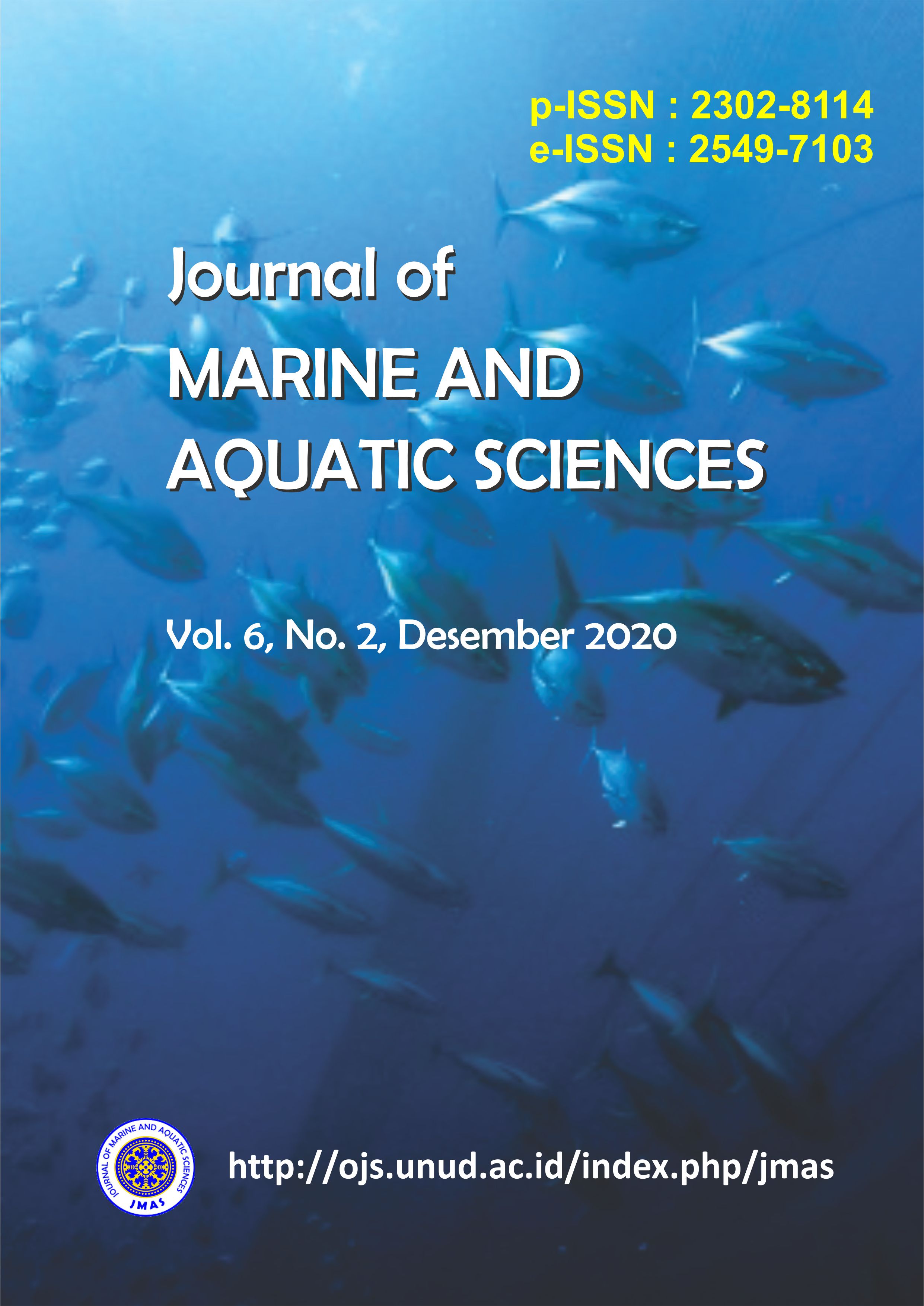Keanekaragaman Vegetasi Akuatik di Peraian Danau Batur, Kintamani, Bangli
Abstract
Batur lake is an aquatic natural resource that has a very important value in terms of ecological functions and economic functions. Batur lake gets pressure due to discharges of various types of waste generated from plantation activities, community settlements, cultivated feed residues in floating net cages, tourism activities and water transportation waste. It can cause ecosystems disruption in Batur lake, especially on the aquatic vegetation. This study aims to determine the species diversity and the influence of community activities on aquatic vegetation in Batur lake. This research was conducted from February to March 2017 at Batur Lake using quantitative descriptive method. Sampling was conducted at five stations by taking data and samples of aquatic vegetation, measuring water quality (temperature, pH, DO, clarity and turbidity) and water samples for testing nitrate, phosphate and sulfide acid content. The aquatic vegetation species that found were seven types, namely Alternanthera philoxeroides, Persicria decipiens, Phragmites australis, Eicchornia crassipes, Ceratophyllum demersum, Pistia stratiotes and Azolla pinnata. The value of diversity is in the low category. Uniformity of aquatic vegetation in Lake Batur waters ranged from 0.62257 - 0.874. The dominant value ranges from 0.22435 - 0.61563. The highest density values were found in species of Alternanthera philoxeroides at station II with 880 ind/m2 and 40 ind/m2 of Persicaria decipiens as the lowest density species. The water quality parameters give a significant influence on the growth of aquatic vegetation in Batur lake waters.
Downloads

This work is licensed under a Creative Commons Attribution 3.0 International License.
Copyright 2012 - 2023 Journal of Marine and Aquatic Sciences (JMAS)
Published by Fakultas Kelautan dan Perikanan Universitas Udayana, Denpasar, Bali, Indonesia
JMAS (p-ISSN 2302-8114; e-ISSN 2549-7103)


